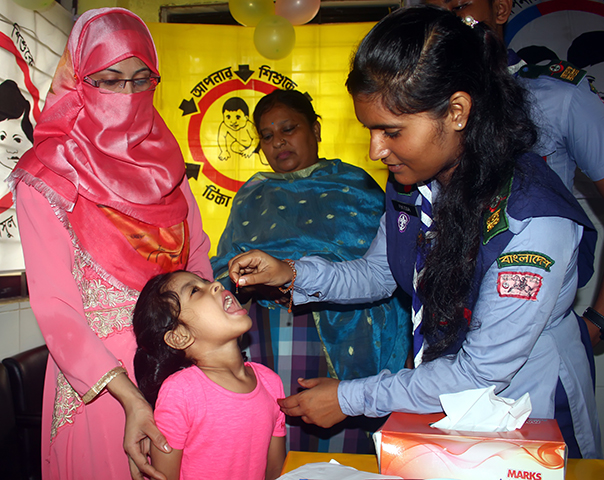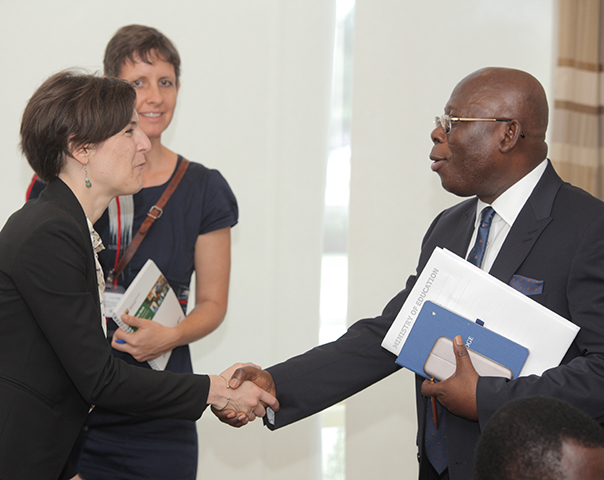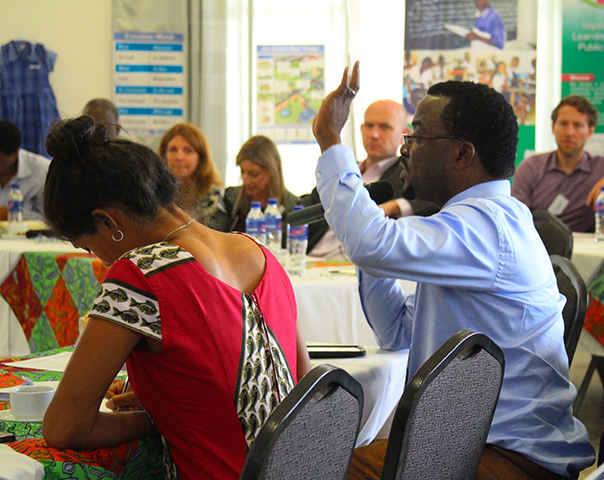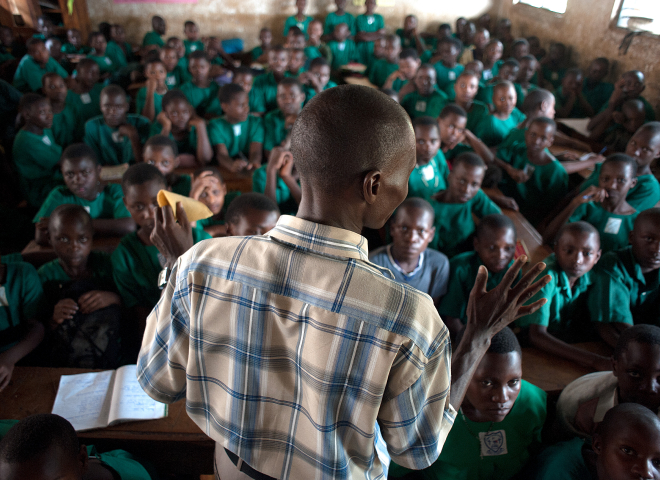The Challenge
Two million children die of diarrheal disease each year and contaminated water is often to blame. Treating water with chlorine could substantially reduce this toll. The most common approach to chlorination in areas without piped water infrastructure is to offer small bottles of chlorine for sale to consumers. However, chlorine use has been slow to catch on in this system. In this Kenyan study area, for example, less than ten percent of households regularly use chlorine at a monthly cost of approximately USD 0.30, despite several years of vigorous social marketing that has raised awareness about the product.
The Evaluation
Researchers examined free provision of dilute chlorine via a point-of-collection system, which includes a container to dispense the product placed at the water source, a local promoter to encourage the product’s use, and free provision of a supply of chlorine solution packed in bulk. This bulk supply dramatically reduces delivery costs relative to the retail approach, which requires packaging chlorine in small bottles, and relative to door-to-door distribution, which in addition significantly raises marketing costs. Hence, bulk distribution to water sources makes free provision more realistic. Additionally, this delivery method makes chlorine use very convenient. Users can treat drinking water when they collect it.
The required agitation and wait time for chlorine-treated water are at least partially accomplished automatically during the walk home from the source. The source-based dilute chlorine disinfection approach to water treatment makes this act salient and public, in addition to making it cheaper and more convenient. The dispenser provides a daily visual reminder to households to treat their water at the moment when it is most salient—as water is collected—and maximizes the potential for learning, norm formation, and social network effects by making the dispenser public. Potential users can see others who use the dispenser, and they have the opportunity to ask questions; they will also know that others will see whether they use the dispenser.
Results
Take-up of chlorine provided through dispensers dramatically exceeded take-up of chlorine for treating water for in-home use. When communities were randomly assigned to receive a promoter and a community dispenser, take-up was approximately 40 percent in the short run (three weeks) but climbed to more than 60 percent by the medium term (three to six months), representing 37- and 53-percentage point gains, respectively, compared to the communities that did not receive them. Take-up remained over 50 percent two years after the dispensers were installed.
In contrast to the take-up levels achieved with the dispensers, clinic-based coupon redemption started higher and dropped over time. More than 40 percent of households that were given coupons redeemed them 8 months into the program, but this figure fell to 20 percent by 12 months. This finding suggests that the success of the dispenser may be due not only to the zero price but also to the reduction in the psychic cost of remembering to treat water that is achieved by source-based treatment as well as other attributes, like the visual reminders. Although take-up rates are slightly lower than those achieved in some trials, the dispenser system relies far less on outside personal contact (e.g., from repeated household visits from enumerators) than do those approaches; hence, costs are significantly lower. The chlorine dispenser is extremely cost-effective, with a comparative study finding dispensers the most effective from a range of low cost approaches to reducing diarrhea.
Policy Impact and Implications
A later study in 2023 found that chlorinated water treatment reduced child mortality by 25 percent and was one of the most cost-effective methods to improve child survival.1
Evidence on the effectiveness of the point-of-collection chlorine dispenser system provided the impetus for IPA to incubate the Dispensers for Safe Water program. Now the Dispensers for Safe Water program has transitioned to Evidence Action, an organization dedicated to scaling up proven interventions to improve the lives of people in poverty in Africa and Asia. The Dispensers for Safe Water program, rebranded as Safe Water Now, is reaching over 10 million people in Kenya, Malawi, and Uganda as of 2025.
More information about Safe Water Now can be found on the Evidence Action website.
Sources
1. Kremer, Michael, Stephen P. Luby, Ricardo Maertens, Brandon Tan, and Witold Więcek. Water treatment and child mortality: A meta-analysis and cost-effectiveness analysis. No. w30835. National Bureau of Economic Research, 2023.












